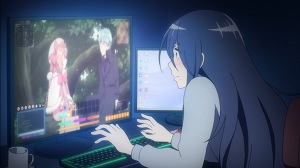written by Laurie Tom
A lot has changed since last year. Amazon’s Anime Strike service has been shut down and everything previously streaming on it has been rolled into its baseline Amazon Prime service. While this does not help fans without Amazon Prime, American fans are no longer being charged a few extra dollars for the same content their Canadian counterparts have been getting as part of their baseline service.
Additionally, HIDIVE is coming into its own as an alternate streaming service with its own exclusive licenses. It doesn’t have a free streaming alternative, but the monthly subscription is affordable and their library is deep with several exclusives.
This spring is packed with high profile series, and a lot of smaller ones, that in an ordinary season I would want to watch. As a result, I viewed more first episodes than usual, and I’ll be going through what I checked out in alphabetical order with the goal of identifying two or three to follow for the season.
Caligula
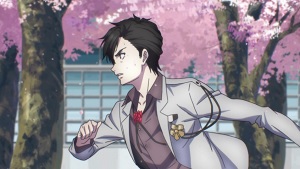
Why I Watched It: I wanted to play Caligula when it came out as an RPG because of its premise. Students live in a virtual reality school where they’re expected to live their day to day idyllic lives indefinitely. Most of them don’t even realize the world isn’t real, but the protagonist discovers the truth and he and his friends band together to escape. The name come from the psychological term the “Caligula Effect.”
What I Thought: I enjoyed this first episode, as Ritsu gradually realizes that there is something wrong with reality (though his friend Mifue gets the worst of it with her rewritten mom). It begins with a distorted cry for help during a virtual idol’s music track that only he hears, and escalates with bizarre, out-of-character behavior from his friends, until he realizes that the representatives of both of the graduating class and incoming class of students are the exact same person. At that point all hell breaks loose, complete with what I assume are artificial students transforming into monsters. It’s an intriguing start and and I really want to know why this illusionary world has started crumbling.
Verdict: I’ll probably be watching. I think this is an excellent contender for my viewing time. The only thing I’m concerned about is that this is a video game adaptation and I’m not sure how well the rest of the story will weather the transition.
Where to find stream: Crunchyroll (subtitled)
Dances with the Dragons

Why I Watched It: Dances with the Dragons has appealing character designs and looks to have nicely animated action scenes. There’s potentially decent worldbuilding with the idea of fighting dragons with “spell equations.”
What I Thought: I like the magi-tech style of combat, in that this is a modern world where magic is just another technology. There is a boundary between human and dragon lands, and juushiki users (awkwardly rendered as “juushikiists” in the subtitles) are sort of bounty hunters who take out the dragons in exchange for pay. However the worldbuilding is uneven, spending a good minute rambling about the discovery of juushiki when there are more pressing issues, like where did the dragons come from (we see ruins of skyscrapers so they can’t be native) and what is an Altar since everyone seems to be impressed by the killing of a semi-Altar dragon?
Verdict: I might come back to this one, but in a crowded season it’s a pass. While it has potential, the first episode is too uneven and there’s too much dead space that doesn’t feel like plot or character development.
Where to find stream: Crunchyroll (subtitled) and Funimation (dubbed, subscription required)
Devil’s Line
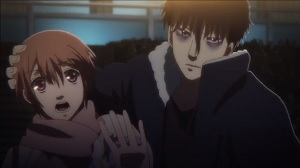
Why I Watched It: I try to stay away from vampire stuff, but this one looks interesting, pairing a college student (rather than a high school girl) with a half-vampire who is part of a police task force. The original manga is seinen, meaning the story is aimed to appeal to the adult male demographic, so it will likely avoid the usual paranormal romance tropes.
What I Thought: This is definitely a gritty, more mature offering. Vampires are much like humans except that they find blood irresistible, and get a high off of drinking it, which tends to result in the victim’s demise. Offending vampires are hunted down and arrested, though not without some level of sympathy, with the understanding that a vampire that has killed can never go back to a peaceful life without blood. I like this level of real world integration with the fantastic, however, the combat animation is extremely off-putting. It appears to be CG, but not rendered in the standard frame rate for anime so it looks too fluid. Aside from that, a lot of the night time scenes feature thin white outlines around characters and I don’t know if that’s a stylistic choice or a rendering error. Finally, I don’t think the two leads have much chemistry with each other and I found it off-putting how Anzai forces a kiss on Tsukasa at the end of the episode, even if he is half-vampire and happens to see blood near her mouth.
Verdict: I’m going to pass. It has some interesting ideas, but I don’t like Anzai or that sort of behavior from my male leads.
Where to find stream: HIDIVE (subtitled and dubbed, subscription required)
Doreiku the Animation
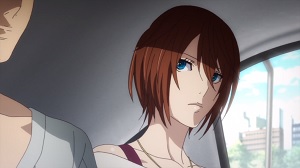
Why I Watched It: A number of questionable people are trapped in a survival game-ish power struggle to achieve dominance over each other, which is potentially right up my alley, so long as the requisite head games are there. Based on a novel series.
What I Thought: It was more trashy than I expected. It’ll probably appeal to people who like fiction with exploitative scenarios. I thought there would be more of a game structure to what’s going on, but basically two people engage in a “duel” while wearing these high tech retainers in their mouths and the loser is then compelled by the device to be a slave to the winner. So far as I can tell, there is no tournament arc and I suspect most of the cast is going to consist of a bunch of unlikable sadists. We meet our protagonists, who’ve yet to engage in dueling anybody, but we do see the result of one duel. Though the winner is taking some understandable revenge, she becomes cruel in ways that she didn’t appear to be before.
Verdict: I’m going to pass. If it was more game-y I could possibly hold my nose through it, but it looks like the show is going to put our protagonists through the wringer, and they won’t be the better for it by the end.
Where to find stream: HIDIVE (subtitled and dubbed, subscription required)
The Legend of the Galactic Heroes: Die Neue These
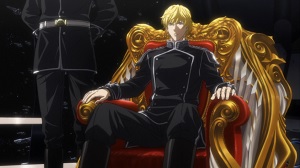
Why I Watched It: This is a remake of an epic space opera series that in older days would never have been licensed due to the size and scope of the project, covering a whopping ten novels about the interstellar war between the Galactic Empire and the Free Planet Alliance. It was one of those series that I knew about when I first got into anime as a legend in itself, but never expected to watch because no one was translating 100+ episode series at the time. The remake will be shorter.
What I Thought: The first episode focuses almost exclusively on the Galactic Empire, introducing one of our dual protagonists, Reinhard von Lohengramm. We don’t get much history about the current war so much as the Galactic Empire and the Free Planet Alliance have been at it for a while and Reinhard is rather young and arguably inexperienced for the role of High Admiral. The space battle segments are good for those craving ship-to-ship combat sans mecha, and his tactics are sound. Reinhard is willing to forgo “common sense” behavior, realizing that by doing so he can obtain an advantage. It’s not until the final minutes of the episode that we hear the voice of his rival, Yang Wen-li, on the side of the Free Planet Alliance, who promises his soldiers they will still win despite their losses. With Reinhard’s skill established and Yang Wen-li’s sheer gumption with his fleet-wide broadcast, it’s a solid tease for their eventual confrontation in the next episode.
Verdict: I’ll be watching. I love this kind of space opera and it’s unfortunately not as common as it used to be in anime. I’m not sure how it’s going to manage condensing everything from the original, but it looks really good so far.
Where to find stream: Crunchyroll (subtitled) and Funimation (dubbed, subscription required)
Magical Girl Ore

Why I Watched It: When I first saw the promo images of a couple beefcake guys in magical girl outfits, I assumed this was another show about boys transforming into magical girls, but it’s not! It’s about a couple girls who get magical girl abilities that turn them into a couple really buff guys. Naturally it’s a comedy and there are romance complications when the protagonist’s crush seems more interested in her male persona than herself.
What I Thought: For a series built on the premise that the girl turns into a guy and then fights demons while wearing a skirt, it takes an awfully long time to get to that point, with the transformation happening right at the end of the episode, so we don’t even get a fight scene. The show clearly knows how to parody its genre, and the “cute” mascot that looks and talks like a yakuza as part of its speech tic is an inspired touch, but the pacing leaves me concerned and I’m not sure whether it’s intentional that her crush is expressionless as a piece of cardboard.
Verdict: I’m going to pass. I might revisit if word of mouth builds up, but it’s not funny enough to make up for the slow pacing.
Where to find stream: Crunchyroll (subtitled)
Persona 5: The Animation
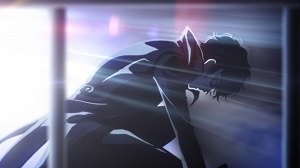
Why I Watched It: Persona 5 was one of the best JRPGs to come out last year, featuring teenage phantom thieves who steal people’s hearts in one world so they can regain their consciences in the real one. This should be a quick and easy way to relive the game (or follow the story in the first place for non-gamers). The game’s voice cast is reprising their roles and the series is expected to run 24 episodes so there should be the room needed to cover the entire plot without compressing and cutting too much.
What I Thought: The first episode was engaging and impressive for compressing what was probably the first 2-3 hours of gameplay into a half hour time slot. We’re told all we need to know about Ren Amamiya’s past, how he came to his new school, and what’s happening in “present day” (the story starts in media res and is mostly told in flashback during Ren’s interrogation). The first episode even manages to make explicit how Ren and Ryuji were able to visit Kamoshida’s palace in the first place, which I don’t think was spelled out in the game. I suspect series newbies will be a little, though not horribly, lost but fans should feel right at home.
Verdict: I’ll be watching at some point, though I’m not sure if it will be during the spring since there’s so much else going on and I already know the story. This is definitely going on my list though.
Where to find stream: Crunchyroll (subtitled)
Real Girl

Why I Watched It: The premise, about a boy who prefers the 2D stuff finally meeting a real girl who might be interested in him, isn’t something I’d usually watch. It feels like male nerd wish fulfillment, but Real Girl is based on a manga for girls, so I assume there is a twist to it that makes it more appealing to the female demographic. The character designs are appealing so I figured I’d give this a shot.
What I Thought: The two protagonists are not people I would normally like, but they’re human. Hikaru Tsutsui doesn’t like real girls because they tend to pick on him for being a nerd and he only has one friend, who is also a nerd, so they both get ostracized together. When he meets Iroha Igarashi he immediately dislikes her because she’s fashionable for her age and has a “loose” reputation. Of course she’s the type of girl who would show up late to class without a care (whereas he’s a model student with perfect attendance). What they go through feels very real, especially with how real people hurt each other without wanting to be cruel.
Verdict: I might watch this one. It’s a crowded season, but Iroha is a really unusual female lead. It’s rare to have a more experienced girl in a romantic pair, especially in shoujo anime. That might be why the episode is entirely from Hikaru’s POV, but I hope that switches later.
Where to find stream: HIDIVE (subtitled and dubbed, subscription required)
Tada Never Falls in Love
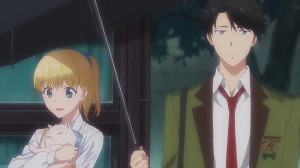
Why I Watched It: Sweet high school romantic comedy between a high school boy, Tada, and the girl, Teresa, who has come to his school as an exchange student. Though the trailer video plays up both the romance and the comedy in a high school setting, the early promotional art shows Teresa in a tiara and ballgown, suggesting she is probably a princess. The show is by the creative team behind the Monthly Girls Nozaki-kun anime, which I had greatly enjoyed.
What I Thought: Tada is not manic funny in the way that Nozaki was and while the first episode isn’t bad, it’s definitely a slower burn. Teresa is heavily implied to be royalty and has come to Japan as an exchange student. It turns out that she’s a total Japanophile, specifically of a period drama called Rainbow Samurai, which weirds out Tada because she acts like it’s the greatest thing ever, while to him it’s an old TV show. Tada himself doesn’t seem that remarkable other than he really likes photography, and that’s how he meets Teresa, when she keeps getting in the way of his lens. So far they have such little chemistry together that even sharing an umbrella in the rain doesn’t feel romantic, though I guess that’s the point, given the series title.
Verdict: I might come back to this one, but it’s crowded season and with Wotakoi being the clear romantic comedy winner and Real Girl also being a contender, I don’t think I’m going to be seeing this one in real time.
Where to find stream: HIDIVE (subtitled and dubbed, subscription required)
Tokyo Ghoul:re
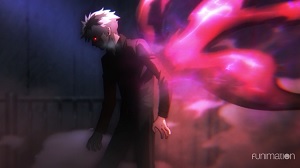
Why I Watched It: The first Tokyo Ghoul anime veered away from the manga and went with a wildly different and original ending, so it’s very odd that the sequel manga is being animated, because it means that people who only follow the anime will have no idea how we got to this point. I’m not sure if concessions are being made to onboard those viewers, or the assumption will be that the audience knows the original manga.
What I Thought: The opening episode is different enough that I doubt I have much more context than someone brand new to the franchise. The government has recently created the Quinx Squad, which are humans with the abilities of ghouls in order to better combat them. Since ghouls require human flesh in order to survive, humans naturally don’t get along with them. We get a bunch of new characters and meet most of the Quinx Squad. The ending confirms where Kaneki is, for fans of the first series wondering why he wasn’t in most of the episode, but I feel like I really needed more answers, not just to Kaneki but to the Quinx Squad’s existence in general, to hold my interest.
Verdict: I’ll come back to this later. Despite the bumpy adaptation the last time around, :re has a new writer and new director, and if the first episode is anything to judge, this series will be tonally different. It’s bloody, but doesn’t seem to be striving for a horror feel, making it more of a dark action show, which feels like a better fit than the action horror hybrid the first one was trying to be.
Where to find stream: Funimation (subtitled and dubbed, subscription required for dub, but not for sub)
Wotakoi: Love is Hard for Otaku

Why I Watched It: After enjoying Recovery of an MMO Junkie I was really looking forward to another romantic comedy about a couple of geeks, this time in an office setting rather than an MMO. “Otaku” is a Japanese word for “enthusiasts” and particularly gets attached to those with nerdier pursuits.
What I Thought: This first episode does a wonderful job of conveying what it’s like being an adult geek, from discovering a fellow geek in the office to trying to hide your hobbies while hanging around muggles. In Narumi’s case, her ex-boyfriend actually dumped her when he discovered she’s a yaoi fangirl. Fortunately for Narumi, changing jobs to avoid her ex lands her at a new company where she gets reacquainted with her taciturn childhood friend, Hirotaka, who is similarly interested in geeky things. After being a sounding board for all her venting, he asks her why she doesn’t date someone who doesn’t mind that she’s a fangirl. The episode ends with Hirotaka giving an amazingly nerdy proposal to Narumi for why she should consider dating him (he’ll always be there when she needs another player in a video game!) and I completely loved it.
Verdict: I’ll be watching. Since they agreed to date at the end of the very first episode, I assume the rest of the series will be the ups and downs of two nerds getting used to dating each other. The other two characters in the show look like they’ll end up being a beta couple and at least one of them is confirmed an otaku in the first episode.
Where to find stream: Amazon Prime Video (subtitled, subscription required)

Laurie Tom is a fantasy and science fiction writer based in southern California. Since she was a kid she has considered books, video games, and anime in roughly equal portions to be her primary source of entertainment. Laurie’s short fiction has been published in Galaxy’s Edge, Strange Horizons, and the Intergalactic Medicine Show.
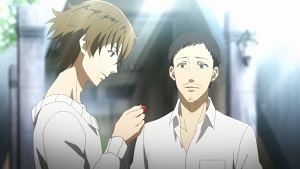


 Dead in the Family is a romance/mystery/horror novel from 2010, the tenth in the Sookie Stackhouse series of novels by Charlaine Harris (which is the basis of the HBO show True Blood). The previous books are all
Dead in the Family is a romance/mystery/horror novel from 2010, the tenth in the Sookie Stackhouse series of novels by Charlaine Harris (which is the basis of the HBO show True Blood). The previous books are all 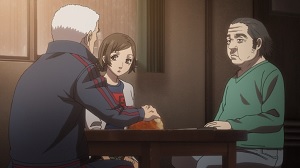
 Dead and Gone is a romance/mystery/horror novel from 2009, the ninth in the Sookie Stackhouse series of novels by Charlaine Harris (which is the basis of the HBO show True Blood). The previous books are all
Dead and Gone is a romance/mystery/horror novel from 2009, the ninth in the Sookie Stackhouse series of novels by Charlaine Harris (which is the basis of the HBO show True Blood). The previous books are all 










 Six Wakes by Mur Lafferty is a science fiction mystery, one of the finalists for the Hugo Award for the Best Novel category of 2017.
Six Wakes by Mur Lafferty is a science fiction mystery, one of the finalists for the Hugo Award for the Best Novel category of 2017.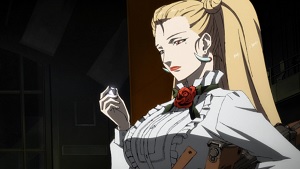
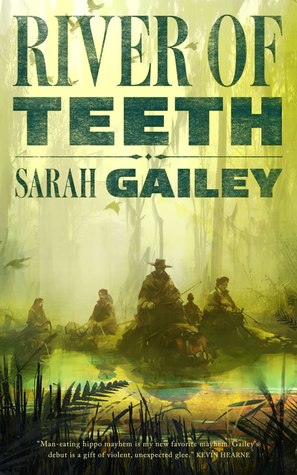 2.
2. 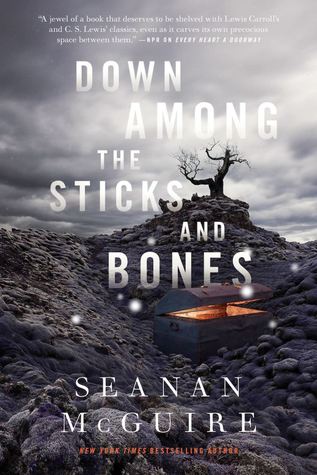 3.
3. 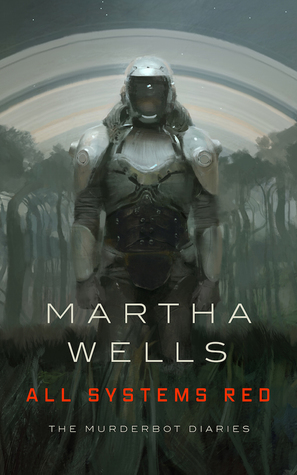 4.
4.  5.
5.  6.
6. 
